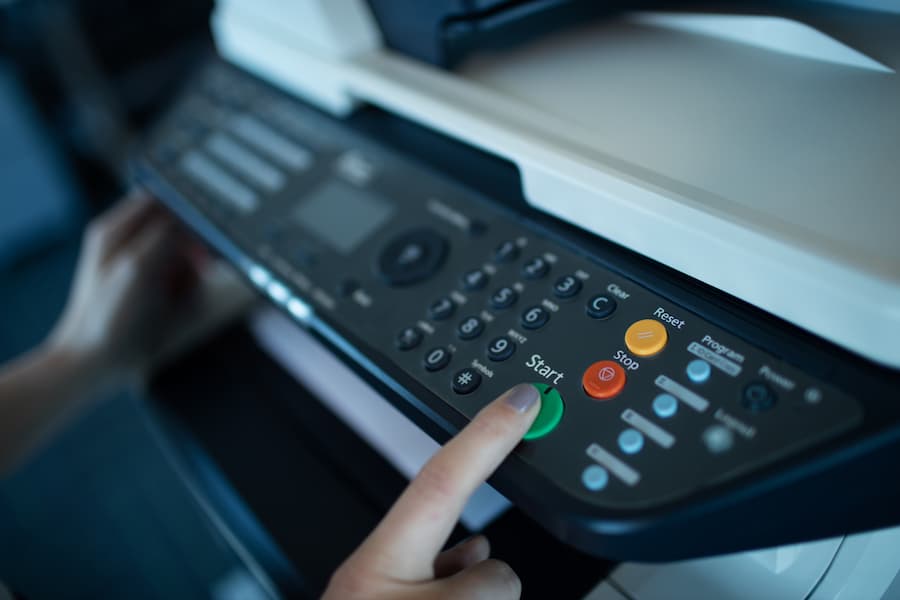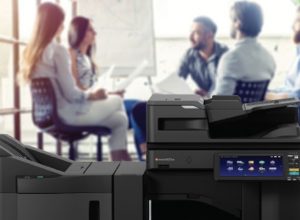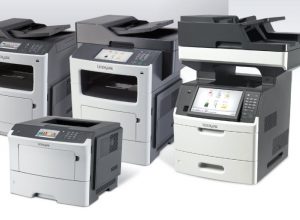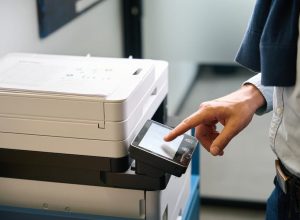Contents
Understanding MFPs: Multifunction Printers
A Multifunction Printer (MFP) is a device that combines multiple functions in one unit. Unlike traditional printers, MFPs integrate printing, copying, scanning, and often faxing capabilities. This multifunctionality not only enhances workflow efficiency, but it also contributes to significant cost savings and space optimization within an office environment.
MFPs serve as a crucial cornerstone in modern office environments by streamlining document processing and management. For instance, a company that relies on a separate machine for each function would require considerable physical space and maintenance efforts to keep those machines operational. In contrast, an MFP significantly reduces the physical footprint, consolidating operations into a single device, which can be strategically placed within workspaces.
Moreover, the functionality of MFPs extends beyond mere printing and copying. For example, many MFPs offer advanced scanning features that include Optical Character Recognition (OCR) which converts scanned documents into editable formats, enhancing data accessibility and usability. This function is particularly valuable for organizations that deal with large volumes of paperwork, allowing them to digitize and store documents with ease.
When considering the benefits, one must note the integration capabilities of MFPs with existing IT infrastructure. Most MFPs come equipped with network connectivity options—both wired (via Ethernet) and wireless (via Wi-Fi)—allowing employees to print or scan documents from their personal devices seamlessly. This level of integration promotes better collaboration among teams and enables remote printing solutions, thus enhancing overall productivity.
Cost efficiency is another critical factor in why offices should embrace MFPs. By combining multiple devices into one, organizations can reduce their energy consumption, leading to lower utility bills and a smaller carbon footprint. Additionally, refilling supplies like toner and paper becomes less frequent because one unit can manage multiple tasks, diminishing the frequency of stock-outs and replenishments.
In terms of versatility, MFPs often feature customizable settings that accommodate diverse printing needs—ranging from high-quality color outputs for marketing materials to fast monochrome prints for internal documentation. They can also support various media types, sizes, and weights, which is vital for businesses needing flexibility in their printing operations.
In essence, MFPs represent an evolution in office technology—a synthesis of capabilities that enhance productivity, reduce overhead costs, and streamline workflows. This innovative approach to document management makes MFPs an essential component for any forward-looking office environment.
Key Functions of MFPs
To understand why MFPs are essential for an office environment, let’s break down their core functions:
- Printing: MFPs provide high-quality printing capabilities, catering to a variety of document types, from simple text documents to complex color presentations.
- Scanning: These devices can convert physical documents into digital formats, making it easier to store, share, and manage information.
- Copying: MFPs can replicate physical documents at high speeds, reducing the time and resources spent on manual copying.
- Faxing: Many MFPs include faxing capabilities, allowing users to send and receive faxes directly from the device.
Benefits of Implementing an MFP in the Office
The adoption of an MFP can provide several significant benefits to office environments, including:
| Benefit | Description |
|---|---|
| Cost Efficiency | By consolidating multiple office devices into one, MFPs reduce equipment and maintenance costs, offering significant savings on supplies. |
| Space Saving | With an MFP, offices can reduce the clutter associated with multiple machines, freeing up valuable office space. |
| Enhanced Productivity | MFPs can perform tasks simultaneously (e.g., scanning while printing), improving workflow and minimizing downtime. |
| Improved Document Management | Digital scanning features simplify document organization and retrieval, facilitating better collaboration and productivity. |
| Remote Access Capabilities | Many modern MFPs come with cloud connectivity features, enabling users to print or access documents remotely from any location. |
Choosing the Right MFP for Your Office
When selecting an MFP, consider the following factors to ensure it meets your office’s needs:
- Volume of Use: Assess the number of documents your office processes daily to choose a model that can handle your workload without compromising quality.
- Print Quality: Look for MFPs that deliver high-quality prints, especially if your office produces marketing materials or client presentations.
- Cost of Operation: Evaluate the cost of consumables like ink or toner, as well as maintenance expenses to determine the overall cost efficiency of the MFP.
- Additional Features: Consider what extra functionalities may benefit your office, such as advanced security features, mobile printing, or the ability to integrate with other software.
Conclusion: Maximizing Office Efficiency with an MFP
In summary, Multifunction Printers represent a crucial investment for businesses looking to improve efficiency, reduce costs, and enhance document management processes. By simplifying operations and consolidating equipment, MFPs not only support daily office tasks but also play a pivotal role in long-term strategic planning by fostering an agile work environment. Integrating an MFP into your office infrastructure can therefore lead to enhanced productivity and significant operational benefits.






